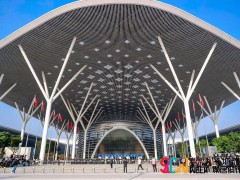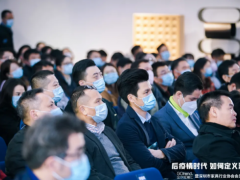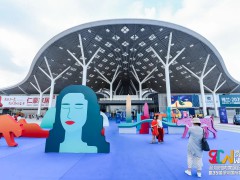当飞机缓缓降落,伦巴第平原的冷空气想要迅速地包围你。那一刻,一年一度的米兰国际家具展正等你到来。深圳家具研究开发院DEDE潮流趋势专家调研团和你一样,再一次启程了。在这里我们将以专业视角,同步为您推送、解析这场盛宴。
今天为您分享的是,2017年米兰展官方潮流趋势关键词:co-living(合居合住),为了便于您获取原汁原味的信息,我们采用了中英文双语推送。
■ 这些年,我和我们发生了什么
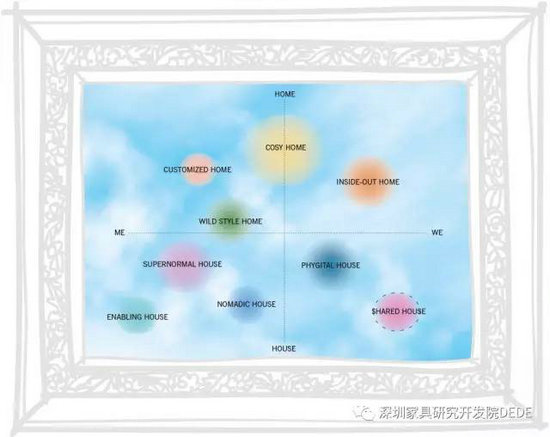
▲用人种志和蓝色天空法绘制的生活形态坐标
金融危机过去快十年了,共享型经济正日益崛起,促使人们的生活方式进化,特别是“Y生代”(年轻一代)。如今,共享型产品和服务正在被人们拥抱。
The financial crisis and the advent of the sharing economy are impacting significantly on the evolution of people’s behaviours and lifestyles, especially those in the younger age brackets. The so-called Millennials, or representatives of what is known as Generation Y, have embraced concepts such as sharing and immediate and unrestricted “access” in relation to goods and services.

■ 生活=所有权=服务
不无例外的是,家庭和生活方式也稳步地“优步化了”(优步:一种在移动端的共享型打车软件,已退出中国大陆,你可能更熟悉它的“中国版”——滴滴打车)。从那些国际领先型城市中心的生活方式中,接下来的这个公式概念愈发成立:“生活=所有权,生活=服务”。大城市里的人们生活成本飙升,在住房领域,抵押贷款需要越来越多的实体担保,合同往往不那么灵活,可支配的收入(存款)普遍不高。生活作为一种服务,我们不如缩写为LAAS,意味着像优步等一样的服务,会帮助我们在传统的“买房”或“租房”中寻求新的解决方案,而现在我们多了一个“订阅”功能。
Homes and lifestyles are no exception to what could be seen as the steady “uberisation” of all aspects of consumption. The leading international urban centres are seeing the inception of new habitative formulae, marking the passage from the concept of “living” implying “ownership” to the concept of “living” implying “service”.The soaring costs of living in the great cities, mortgages requiring increasingly substantial guarantees, contracts that are often inflexible, and a widespread fall in disposable income are also fuelling the spread of on-demand models in the housing field. Living As A Service, or its acronym LAAS, means precisely that – just like services such as Uber, Netflix and Kindle; in addition to traditional house buying or renting solutions, there is now a “subscription” option.
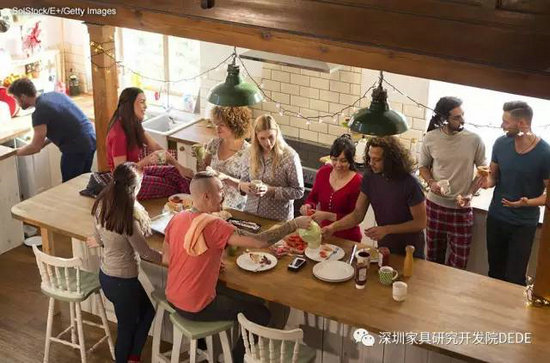
■ 不强调拥有,而是曾经拥有
这个新的、蠢蠢欲动的真实需求会让越来越多的人尝试改变自己的生活习惯,我们的住宅会越来越强烈的“社交化”,这意味着共享会是很自然的事情。These new, very real demands from a large slice of the population are generating new genres of residential facilities, strongly “socialising” in nature, and new shared understandings of what habitation means.越来越多的人们要花比以前更长的时间来“暂停成年”(DEDE译注:从学生时代到进入社会后,继续群居会让学生式的时间变长)。换句话说,在建立社会关系、文化身份之前,他们需要花更长的时间来磨砺自己,直到自己的牢固确立了(DEDE译注:所谓先立业后成家,恐怕老外也是这样)。其结果是,我们对承诺和稳定性的欲望在减少,在拥有产品所有权面前,更加重视体验的质量。人们思考的重点变成了:在哪里生活、怎么生活、如何享受相同水平的舒适、灵活性、及时享乐。我们真得感谢这十年发展起来的互联网新技术,它让我们不再固化生活的思维。在伦敦老街区和美国纽约布鲁克林社区里提供的一些新型住宅,让我们看到了这种创新在发挥作用,新的社会意识在形成。
More and more people are going through a much longer “suspended adulthood” than in the past, in other words, they are taking longer to hone their own social, cultural and relational identities before they become firmly established. The upshot is a diminished desire for commitment and stability, with greater value placed on the quality of experiences than on the ownership of goods just for the sake of it or seeking out – including where and how to live – the same level of convenience, comfort, flexibility and immediacy to which they have become accustomed thanks to the new technologies.The Collective Old Oak in London and the Common in Brooklyn are state-of-the-art residential complexes that provide an innovative response to these emerging new demands, leveraging a renewed sense of community.
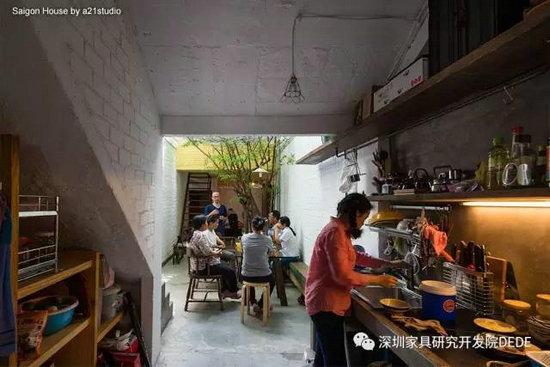
这个概念就是部分的学生宿舍+部分的酒店,会员每月支付租金(老外称为“订阅”),以此得到私人公寓和共享的公共空间、休息室和用餐区、甚至是厨房、花园以及工作站、wifi、会客室、清洁服务、安全服务、电影院、水疗中心、健身房等设施(真是无奇不有啊)。
Their concept is part student lodging and part hotel. Members pay a monthly subscription, for which they get a private apartment and access to communal spaces – lounge and dining areas, a kitchen, garden – as well as workstations, WiFi, concierge, cleaning, security services and cinema, spa and gym facilities.
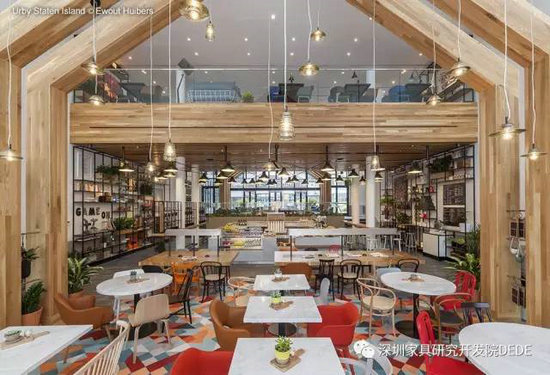
■ 不妨把问题交给设计师
因此,公共生活(co-living)的难题就交给建筑师、室内设计师了,挑战随之而来,公共生活是个大杂烩,意味着家庭越来越可变,空间容纳着不同的人、不同类型的家庭和不同类型的生活方式、价值观、兴趣爱好、生活选择。甚至还以为着把空间分享给人类的朋友——宠物。因此在此基础上,显然这个潮流趋势继续演化成两个议题——“为合居者设计”、“为宠物设计”。(DEDE注:下期让我们继续分享)Communal living has thus become one of the major design challenges facing architects and interior designers at various levels. Co-living, therefore, means that homes are increasingly becoming places of variable geometry capable of housing several different generations and different types of families and communities with shared habits, values, interests and life choices.Co-living also means sharing the domestic space not just with other human beings but also with animals - cats and dogs in the main - which bring their own specific demands and requirements. This has triggered two macro-trends: Co-housing and Pet Style.

▲2017欧洲版白皮书=科隆展+米兰展双展图集
■请继续关注2017米兰展展潮流趋势后续报道。
■FT2017家具潮流趋势发布会将于5月首发。


